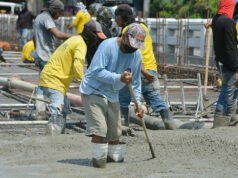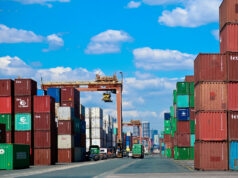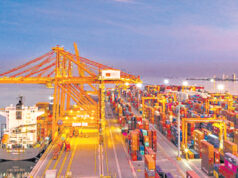BPI Securities sees PSEi at 8,900 by end-2019
By Arra B. Francia, Reporter
BPI SECURITIES Corp. projects to see the local stock barometer at the 8,900 level by the end of 2019, factoring in concerns on inflation and rising interest rates.
“We think 8,900 is a good target for next year because that will already price in not only the inflation concerns but some of the adjustments we’ve seen in interest rates,” BPI Securities President and Chief Executive Officer Hermenegildo Z. Narvaez told BusinessWorld in a recent interview.
The 2019 projection is 8.54% higher than BPI Securities’ estimate that the Philippine Stock Exchange index (PSEi) will close at around the 8,200 level this year, as per an expected rally sometime in December.
The PSEi is currently at the 7,000 level, finishing Friday’s trading at 7,078.20. This marks a 21.87% drop, or nearly 2,000 points, from the market’s record close of 9,058.62 last Jan. 29.
Mr. Narvaez said the main concern for investors as of the moment is inflation, which could potentially hamper the earnings growth of some companies. The Philippine Statistics Authority last Friday reported that the consumer price index accelerated by 6.7% in September, bringing the nine-month average to 5%.
BPI Securities said it expects inflation to continue moving up until it peaks to around seven percent in December, bringing the full-year 2018 figure to about 5.5-5.6%.
“We think that inflation this year should be somewhere between 5.5-6% or somewhere closer, and next year somewhere closer to about 3.5%, as the growth in oil prices normalize… We have to see inflation start to normalize before 4% for the people to be a bit more comfortable,” Mr. Narvaez explained.
The continued outflow of foreign funds has also contributed to the lackluster performance of the PSEi.
As of Oct. 5, the local stock market has logged 27 straight days of net foreign selling, with a record figure of P1.42 billion in net sales for a single day. Foreign investors have recently shunned emerging markets in favor of more developed markets where they could have more stable returns.
Asked what would bring back foreign funds into the country, Mr. Narvaez said the Philippine economy would have to grow faster than 6.5% to attract more investors.
“We have to see an acceleration of growth. If we’re just going to continue to grow at maybe 6-6.5%, that may not compel investors to come back in a major way. We should see growth upwards of 6.5%,” he said.
The country’s gross domestic product (GDP) slowed to 6% in the second quarter of the year, compared to the 6.6% growth in the first quarter. A number of global institutions have already lowered their Philippine GDP forecasts for this year, including the International Monetary Fund which slashed its forecast to 6.5% from 6.7%, and the World Bank which cut its target to 6.5% from 6.7%.



